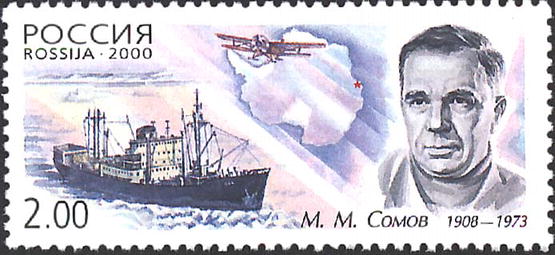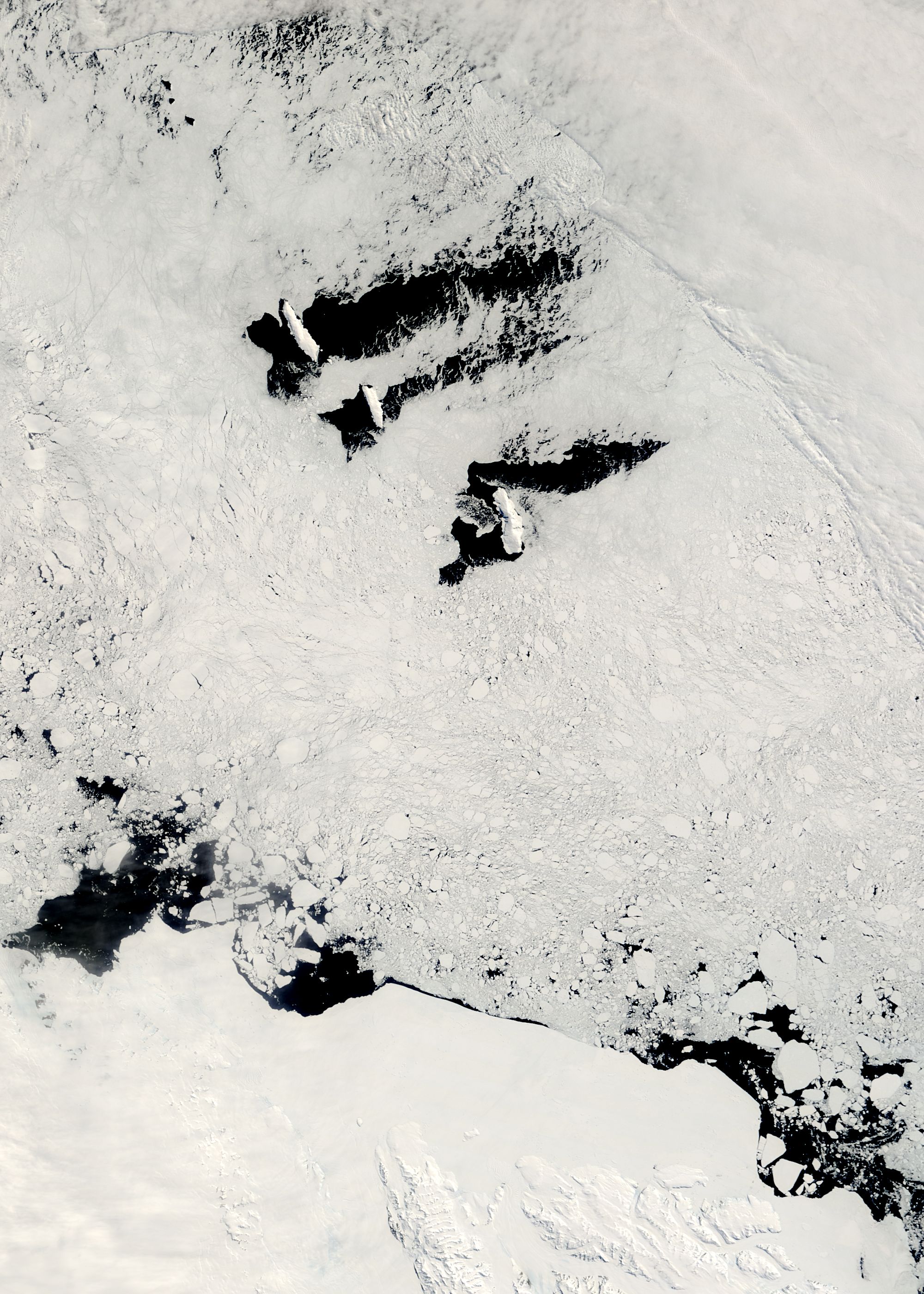|
Somov Sea
Somov Sea (, ''More Somova'') was a proposed name for part of the Southern Ocean. It would be located north of the easternmost part of the Antarctic subcontinent East Antarctica, north of Oates Coast, Victoria Land, and of George V Coast, between 150° and 170° East. West of it would be the D'Urville Sea. East of Cape Adare, at 170°14' East, is the Ross Sea. The name was first proposed by the Russians for the 2002 International Hydrographic Organization (IHO) draft. This draft was never approved by the IHO (or any other organization), and the 1953 IHO document (which does not contain the name) remains currently in force. Leading geographic authorities and atlases do not use the name, including the 2014 10th edition World Atlas from the United States' National Geographic Society and the 2014 12th edition of the British Times Atlas of the World. But Soviet and Russian-issued map do. The Somov Sea would have an area of 1,150,000 km² and be up to 3000 meters deep. The Bal ... [...More Info...] [...Related Items...] OR: [Wikipedia] [Google] [Baidu] |
Ross Sea
The Ross Sea is a deep bay of the Southern Ocean in Antarctica, between Victoria Land and Marie Byrd Land and within the Ross Embayment, and is the southernmost sea on Earth. It derives its name from the British explorer James Clark Ross who visited this area in 1841. To the west of the sea lies Ross Island and Victoria Land, to the east Roosevelt Island and Edward VII Peninsula in Marie Byrd Land, while the southernmost part is covered by the Ross Ice Shelf, and is about from the South Pole. Its boundaries and area have been defined by the New Zealand National Institute of Water and Atmospheric Research as having an area of . The circulation of the Ross Sea is dominated by a wind-driven ocean gyre and the flow is strongly influenced by three submarine ridges that run from southwest to northeast. The circumpolar deep water current is a relatively warm, salty and nutrient-rich water mass that flows onto the continental shelf at certain locations. The Ross Sea is covered with ... [...More Info...] [...Related Items...] OR: [Wikipedia] [Google] [Baidu] |
Soviet Antarctic Expedition
The Soviet Antarctic Expedition (SAE or SovAE) (russian: Советская антарктическая экспедиция, САЭ, ''Sovetskaya antarkticheskaya ekspeditsiya'') was part of the Arctic and Antarctic Research Institute of the Soviet Committee on Antarctic Research of the Academy of Sciences of the USSR. The Soviet Union's Ministry of Sea Transport was responsible for the administration, logistics and supply of the expeditions. The first Soviet contact with Antarctica was in January 1947 when the Slava whaling flotilla began whaling in Antarctic waters. Stations The first Soviet Antarctic station, '' Mirny'', was established near the coast on February 13, 1956. This was added to in December 1957 by another station, ''Vostok'' built inland near the south geomagnetic pole. Year-round stations * Mirny (established February 13, 1956) * Vostok (established December 16, 1957) * Novolazarevskaya (established January 18, 1961) * Molodyozhnaya (established Janu ... [...More Info...] [...Related Items...] OR: [Wikipedia] [Google] [Baidu] |
Mikhail Somov
Mikhail Mikhailovich Somov (russian: Михаил Михайлович Сомов; , in Moscow – 30 December 1973, in Leningrad) was a Soviet oceanologist, polar explorer, Doctor of Geographical Sciences (1954). Somov graduated from the Moscow Hydrometeorological Institute in 1937. In 1939, he was appointed senior researcher at the Arctic and Antarctic Research Institute. In 1950–1951, Mikhail Somov headed a drift-ice station '' North Pole-2''. In 1955–1957, he became the commander of the first Soviet Antarctic Expedition. Mikhail Somov was also the first Soviet delegate to the Scientific Committee on Antarctic Research. The Somov Sea north of Victoria Land and a glacier in Queen Maud Land (both East Antarctica) bear Mikhail Somov's name, as well as a scientific icebreaker. A minor planet 3334 Somov discovered by Czech astronomer Antonín Mrkos in 1981 is named after him. Somov was awarded the title Hero of the Soviet Union in 1952. Awards * Hero of the Soviet Union (1 ... [...More Info...] [...Related Items...] OR: [Wikipedia] [Google] [Baidu] |
Russia
Russia (, , ), or the Russian Federation, is a transcontinental country spanning Eastern Europe and Northern Asia. It is the largest country in the world, with its internationally recognised territory covering , and encompassing one-eighth of Earth's inhabitable landmass. Russia extends across eleven time zones and shares land boundaries with fourteen countries, more than any other country but China. It is the world's ninth-most populous country and Europe's most populous country, with a population of 146 million people. The country's capital and largest city is Moscow, the largest city entirely within Europe. Saint Petersburg is Russia's cultural centre and second-largest city. Other major urban areas include Novosibirsk, Yekaterinburg, Nizhny Novgorod, and Kazan. The East Slavs emerged as a recognisable group in Europe between the 3rd and 8th centuries CE. Kievan Rus' arose as a state in the 9th century, and in 988, it adopted Orthodox Christianity from the ... [...More Info...] [...Related Items...] OR: [Wikipedia] [Google] [Baidu] |
Balleny Islands
The Balleny Islands () are a series of uninhabited islands in the Southern Ocean extending from 66°15' to 67°35'S and 162°30' to 165°00'E. The group extends for about in a northwest-southeast direction. The islands are heavily glaciated and of volcanic origin. Glaciers project from their slopes into the sea. The islands were formed by the so-called Balleny hotspot. The group includes three main islands: Young, Buckle and Sturge, which lie in a line from northwest to southeast, and several smaller islets and rocks: *northeast of Young Island: Seal Rocks, Pillar *southeast of Young Island: Row Island, Borradaile Island (with Swan Base shelter hut) *south of Buckle Island: Scott Cone, Chinstrap Islet, Sabrina Islet (with Sabrina Refuge shelter hut), and the Monolith The islands are claimed by New Zealand as part of the Ross Dependency (see Territorial claims in Antarctica). Islands and rocks from north to south The islands' area totals and the highest point has b ... [...More Info...] [...Related Items...] OR: [Wikipedia] [Google] [Baidu] |
Times Atlas Of The World
''The Times Atlas of the World'', rebranded ''The Times Atlas of the World: Comprehensive Edition'' in its 11th edition and ''The Times Comprehensive Atlas of the World'' from its 12th edition, is a world atlas currently published by HarperCollins Publisher L.L.C. Its most recent edition, the fifteenth, was published on 6 September 2018. Editions First generation The first version of ''The Times Atlas of the World'' appeared as ''The Times Atlas'' in 1895; more printings followed up to 1900. It was published at the office of '' The Times'' newspaper in London, and contained 117 pages of maps with an alphabetical index of 130,000 names. The atlas was a reprint of Cassell & Co.'s ''Universal Atlas'', published in 1893. Cassell's atlas, in turn, used maps in English printed in Leipzig which were drawn from the second edition (1887; with some maps of the third edition (1893)) of the German '' Andrees Allgemeiner Handatlas'' from the publisher Velhagen & Klasing. Second gener ... [...More Info...] [...Related Items...] OR: [Wikipedia] [Google] [Baidu] |
National Geographic Society
The National Geographic Society (NGS), headquartered in Washington, D.C., United States, is one of the largest non-profit scientific and educational organizations in the world. Founded in 1888, its interests include geography, archaeology, and natural science, the promotion of environmental and historical conservation, and the study of world culture and history. The National Geographic Society's logo is a yellow portrait frame—rectangular in shape—which appears on the margins surrounding the front covers of its magazines and as its television channel logo. Through National Geographic Partners (a joint venture with The Walt Disney Company), the Society operates the magazine, TV channels, a website, worldwide events, and other media operations. Overview The National Geographic Society was founded on 13 January 1888 "to increase and diffuse geographic knowledge". It is governed by a board of trustees whose 33 members include distinguished educators, business exe ... [...More Info...] [...Related Items...] OR: [Wikipedia] [Google] [Baidu] |
International Hydrographic Organization
The International Hydrographic Organization (IHO) is an intergovernmental organisation representing hydrography. , the IHO comprised 98 Member States. A principal aim of the IHO is to ensure that the world's seas, oceans and navigable waters are properly surveyed and charted. It does this through the setting of international standards, the co-ordination of the endeavours of the world's national hydrographic offices, and through its capacity building program. The IHO enjoys observer status at the United Nations, where it is the recognised competent authority on hydrographic surveying and nautical charting. When referring to hydrography and nautical charting in Conventions and similar Instruments, it is the IHO standards and specifications that are normally used. History The IHO was established in 1921 as the International Hydrographic Bureau (IHB). The present name was adopted in 1970, as part of a new international Convention on the IHO adopted by the then member nations ... [...More Info...] [...Related Items...] OR: [Wikipedia] [Google] [Baidu] |
Cape Adare
Cape Adare is a prominent cape of black basalt forming the northern tip of the Adare Peninsula and the north-easternmost extremity of Victoria Land, East Antarctica. Description Marking the north end of Borchgrevink Coast and the west end of Pennell Coast, the cape separates the Ross Sea to the east from the Southern Ocean to the west, and is backed by the high Admiralty Mountains. Cape Adare was an important landing site and base camp during early Antarctic exploration. Off the coast to the northeast are the Adare Seamounts and the Adare Trough. History Captain James Ross discovered Cape Adare in January 1841 and named it after his friend the Viscount Adare (the title is derived from Adare, Ireland). In January 1895, Norwegian explorers Henrik Bull and Carsten Borchgrevink from the ship ''Antarctic'' landed at Cape Adare as the first documented landing on Antarctica, collecting geological specimens. Borchgrevink returned to the cape leading his own ex ... [...More Info...] [...Related Items...] OR: [Wikipedia] [Google] [Baidu] |
Southern Ocean
The Southern Ocean, also known as the Antarctic Ocean, comprises the southernmost waters of the World Ocean, generally taken to be south of 60° S latitude and encircling Antarctica. With a size of , it is regarded as the second-smallest of the five principal oceanic divisions: smaller than the Pacific, Atlantic, and Indian oceans but larger than the Arctic Ocean. Over the past 30 years, the Southern Ocean has been subject to rapid climate change, which has led to changes in the marine ecosystem. By way of his voyages in the 1770s, James Cook proved that waters encompassed the southern latitudes of the globe. Since then, geographers have disagreed on the Southern Ocean's northern boundary or even existence, considering the waters as various parts of the Pacific, Atlantic, and Indian oceans, instead. However, according to Commodore John Leech of the International Hydrographic Organization (IHO), recent oceanographic research has discovered the importance of Southe ... [...More Info...] [...Related Items...] OR: [Wikipedia] [Google] [Baidu] |



